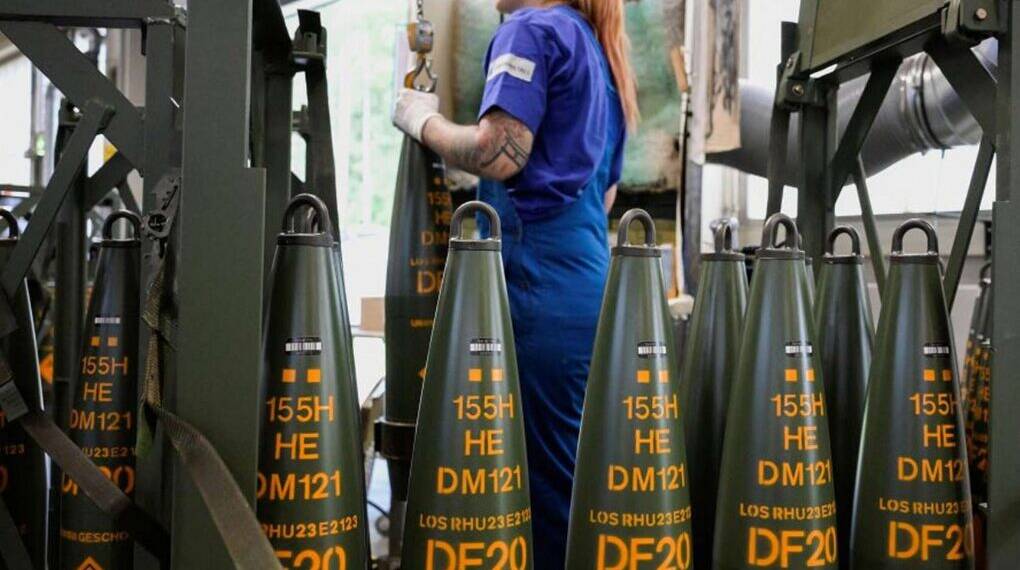NATO Secretary General Mark Rutte has issued a stark warning about the West’s defense readiness, highlighting that Russia is dramatically outproducing the entire NATO alliance in ammunition, a critical factor in the ongoing war in Ukraine. Speaking at a keynote in London on June 10, Rutte declared, “In terms of ammunition, Russia produces in three months what the whole of NATO produces in a year.”
Rutte, who assumed the role of NATO chief in October 2024, emphasized the imbalance further: “NATO’s economy is 25 times bigger than Russia’s. It’s $50 trillion, compared to Russia’s $2 trillion. Yet that two-trillion-dollar economy is producing four times as much ammunition as NATO right now.”
Verifying the Ammunition Gap
While Rutte’s warning has raised eyebrows, data and independent analysis confirm his concerns. Russia is estimated to have produced or refurbished 4.5 million artillery shells in 2024, compared to NATO’s roughly 1.2 million, according to the German Institute for International and Security Affairs.
This staggering disparity — despite NATO’s far superior economic and technological resources — highlights a critical vulnerability in Western military preparedness and supply chains.
Inside Russia’s Ammunition Surge
Russia’s military-industrial capacity has scaled rapidly since the start of its full-scale invasion of Ukraine in 2022. In just two years, Russian ammunition production soared from 400,000 shells in 2022 to an estimated 4.5 million in 2024. These figures come from multiple sources, including the Estonian Foreign Intelligence Service and a Bain & Company analysis.
Most of Russia’s output consists of 122mm and 152mm artillery shells. These are cheaper and faster to produce than NATO-standard 155mm shells — $1,000 vs. $4,000 apiece, respectively.
Beyond its own factories, Moscow’s growing alliance with countries like North Korea has further bolstered its stockpiles. According to leaked South Korean intelligence, Pyongyang may have supplied up to 12 million 152mm shells to Russia. Satellite imagery from late 2024 supports reports of expanded production facilities and ammunition shipments from North Korea.
NATO’s Push to Close the Gap
Western nations are scrambling to catch up. In 2024, the U.S. and Europe jointly produced only about 1.2 million artillery shells, nearly four times less than Russia. However, NATO allies aim to close that gap by dramatically expanding production capacity in 2025.
The European Commission has set a target of producing 2 million shells annually by 2025.
The U.S. aims to manufacture 100,000 rounds per month by October 2025.
Other allies, including the UK, Canada, and Norway, are investing in defense production and supply chains.
Yet challenges remain. The West’s industrial base for ammunition manufacturing has long been underdeveloped. A critical shortage of explosives, particularly trinitrotoluene (TNT), has emerged as a bottleneck, with only one TNT factory currently operational in Poland.
Czech-Led Initiative Steps In
With the EU missing its earlier promise to deliver 1 million shells to Ukraine by March 2024, the Czech Republic took the lead with an international fundraising effort. This initiative, now supported by 16 countries, has delivered 1.6 million shells and aims to keep shipments flowing through 2026, depending on the outcome of the Czech parliamentary elections this October.
Will Ukraine Get What It Needs?
Ukraine has stated it needs roughly 200,000 artillery shells per month to maintain its front-line defenses. President Volodymyr Zelenskyy recently confirmed that Kyiv expects to receive around 3 million rounds this year, including 1.8 million from the Czech-led program.
But NATO’s ability to deliver remains uncertain. While production goals have been set, past failures to meet deadlines raise doubts about whether those targets will translate into sustained frontline support.
Can NATO Match Russia’s War Tempo?
The irony is hard to ignore. NATO, with a combined economic strength 25 times greater than Russia’s, is still falling behind in one of the most essential areas of wartime logistics — ammunition. As Russia continues to ramp up production and leverage support from authoritarian allies, the West faces an urgent challenge to revitalize its defense industry, overcome supply shortages, and deliver on its promises to Ukraine.
Whether NATO can close the ammunition gap in time may well determine the future balance of power on the battlefield — and beyond.








